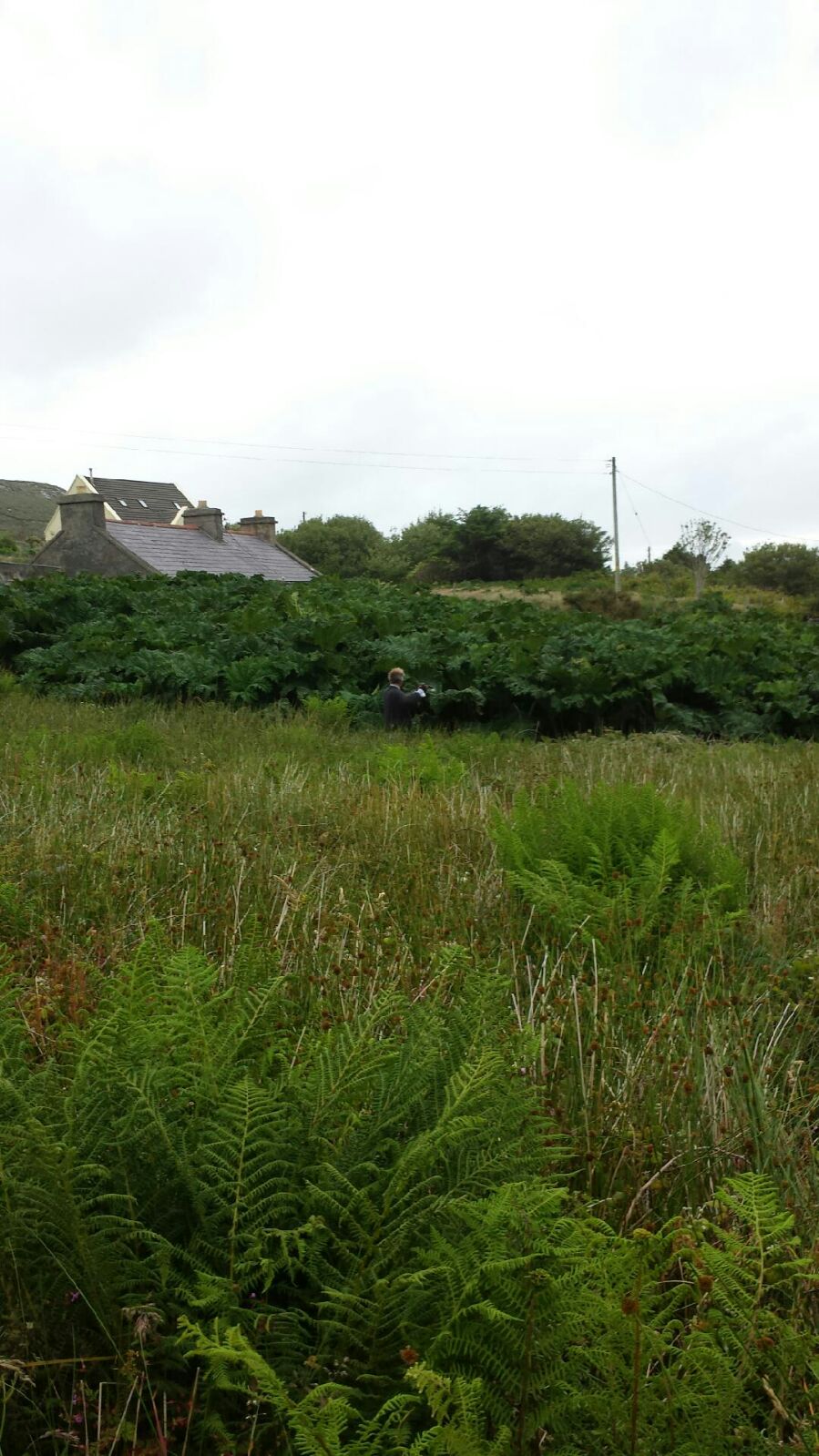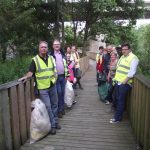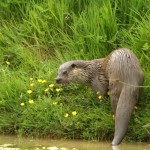The spread of the Invasive species Himalayan Balsam has been…
Campaign to Control/Eradicate Invasive Species in Upper Achill, Co Mayo – an update on the pilot project
Invasive alien terrestrial species are a major environmental problem and are causing environmental harm in different parts of Ireland. They are taking over vast areas of agricultural land and excluding native species. Invasive species are one of the biggest threats to biodiversity worldwide.
Public meetings were held in 2015, in Upper Achill to discuss the growing problem with invasive species like Gunnera (Gunnera tinctoria – Giant or Wild rhubarb) and to a lesser extent Japanese knotweed (Fallopia japonica) and their possible control.
It was also agreed that Rhododendron is a huge problem in the area but was not the focus of this pilot project.
It was agreed that the best way to eradicate/ control the problem of Gunnera and Japanese knotweed was to use a knapsack sprayer and spray these plants. All landowners in Upper Achill were encouraged to spray their own land as it was very important that all land where Gunnera was growing was sprayed to ensure that it would not be a source of cross contamination and spread to other fields in future years.
A Facebook page was setup to highlight and to raise awareness of this problem. The local media also published several articles highlighting the problem with Gunnera in the Upper Achill area.
Biology of Wild Rhubarb (Gunnera)
Gunnera was most likely introduced into Achill over 100 years ago as an ornamental plant and then spread as an invasive species. This probably happened because of climate change as Gunnera requires high rainfall and mild temperatures to grow. Gunnera is native to countries like Chile where there is a similar climate to the West of Ireland. It grows on peaty soils (not on bogs), river banks, gravelly road sides and on cliffs. It also thrives where the land is not grazed or where it is un-used.
Gunnera has spread rapidly in Upper Achill owing to emigration (demographics) and the closure of houses which is nothing new to Upper Achill. It is estimated that there are over 170 acres of land under Gunnera on the island of Achill (UCD studies). Its ability to grow on marginal soils is attributed to the fact that the Gunnera plant can ‘fix’ its own nitrogen from the atmosphere (air contains 78% nitrogen gas by volume) which in turn gives it a lush green appearance in the spring and the ability to outcompete other plants like grasses.

Progress to date:
Consent was sought and received from most of the landowners in the Upper Achill area to gain entry to their land for spraying purposes. A small number of landowners have sprayed their own land since the start of the campaign. However, more landowners are being encouraged to spray their land.
Approximately 5-6 acres of land infected/overgrown with Gunnera has been treated in the Sraheens area over the past Summer. There was a good response to the herbicide application (see photo). Japanese knotweed was also sprayed in the Sraheens area during the Summer and the results look promising.
The Gunnera plants (over 2m in height) were so dominant in the fields in Sraheens that it was nearly impossible to enter some parcels of land for spraying purposes. Those plants that were sprayed in July 2015 did not produce any large fruiting heads compared to the fields which were not sprayed. It will be fascinating to see the difference between these fields in 2016 and in subsequent years.
This is a long term (5-10 year) project where annual monitoring for any re-growth of Gunnera is essential. Undoubtedly respraying will be required since each plant can produce over 250,000 (yes ¼ of a million) seeds per plant and consequently there are probably millions of seeds in the soil seed bank.
Challenges ahead
Good progress was made during 2015. Much was learned about the best time of the year to spray, the best herbicide and the optimum concentration of herbicide to use. It is hoped that further progress on the control of the Gunnera and Japanese knotweed in the Sraheens/Kildownet area will be achieved during 2016.
In conclusion, I believe that this campaign can work and hopefully it can be used as a template for other parts of Achill Island and other areas of the country where Gunnera and Japanese knotweed are problematic. However, it would be appropriate if volunteer campaigns like this one (it could be argued that they are acting in the national interest) received more State support in order to counteract the scourge of terrestrial invasive species like Gunnera and Japanese knotweed which are causing havoc with ecosystem biodiversity in places like Achill island.
Mar a deartear as Gaeilge: ‘Tus maith leath na hoibre’.
For more information please check out our Facebook page: http://bit.ly/achillinvasives
Tom McLoughlin, EPA







